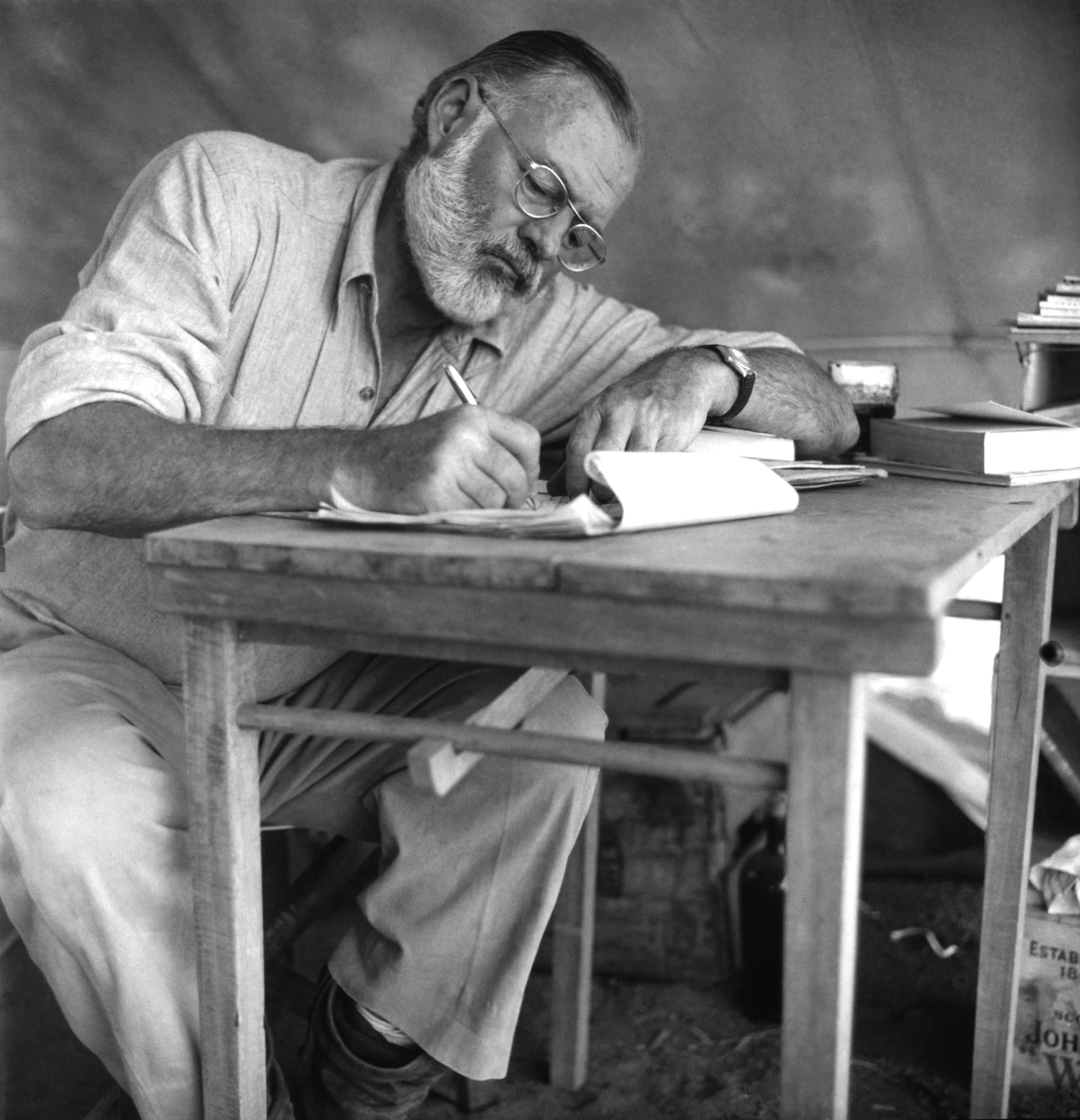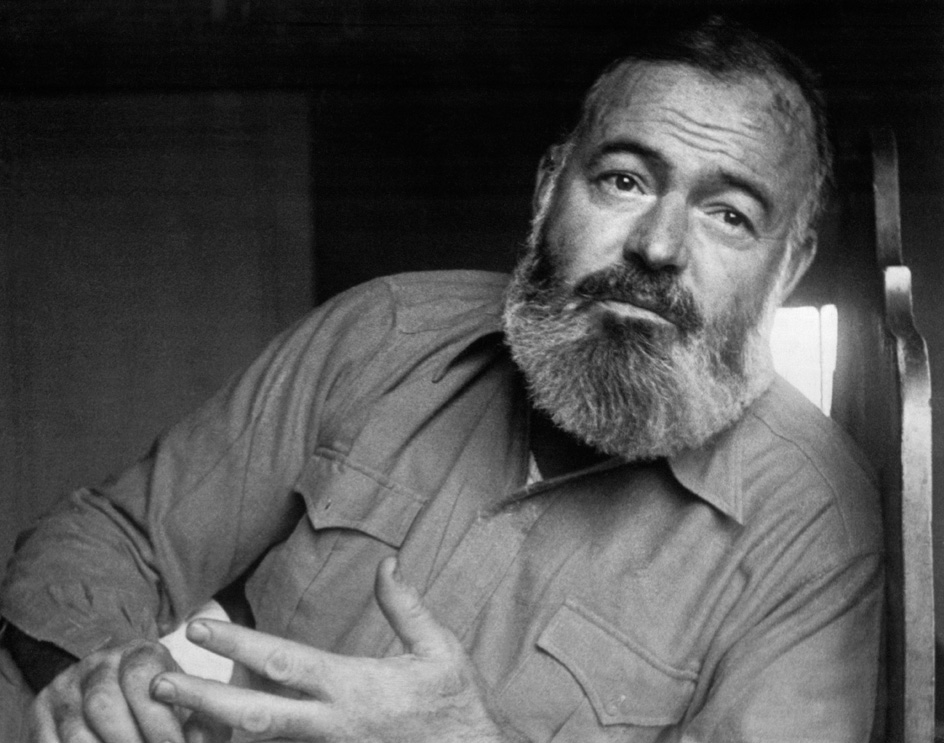Hemingway, Ernest (1899-1961), was one of the most famous and influential American writers of the 1900’s. He received the Nobel Prize for literature in 1954. He won a Pulitzer Prize for his novel The Old Man and the Sea (1952).

Hemingway used a plain, forceful prose style characterized by simple sentences and few adjectives or adverbs. He wrote crisp, accurate dialogue and exact descriptions of places and things. His style has been widely imitated.
Hemingway also created a type of male character, sometimes called the Hemingway hero, who faces violence and destruction with courage. The character displayed the trait of “grace under pressure”—that is, what appears to be unemotional behavior even in dangerous situations. This trait is part of what became known as the Hemingway code.
Early life.
Ernest Miller Hemingway was born on July 21, 1899, in Oak Park, Illinois. After graduating from high school, he worked briefly as a reporter for The Kansas City (Missouri) Star. In 1918—during World War I—he served as a Red Cross volunteer in Italy. He drove an ambulance and worked at a canteen. After working in Italy for six weeks, he was seriously wounded. Hemingway’s wartime experiences help suggest why his writing emphasizes physical and psychological violence and the need for courage.
In 1921, Hemingway went to Paris. There, he met a number of American authors. He became the principal spokesman for a group of disillusioned younger writers sometimes called the “Lost Generation.”
Hemingway’s first published work, Three Stories and Ten Poems, appeared in 1923. It was followed by In Our Time (1924), a collection of short stories. The stories were partly based on his boyhood experiences in northern Michigan.
Rise to fame.
Hemingway’s most famous novels are two of his early works, The Sun Also Rises (1926) and A Farewell to Arms (1929). The Sun Also Rises portrays a group of Americans who, like the members of the “Lost Generation,” were disillusioned by the war. A Farewell to Arms, set in Italy in World War I, is a tragic love story.
Hemingway returned to the United States in 1927. Two collections of his short stories were published during the 1930’s. They contain some of his best writing. They include “A Clean, Well-Lighted Place,” “The Short Happy Life of Francis Macomber,” and “The Snows of Kilimanjaro.” He also wrote some nonfiction. Death in the Afternoon (1932) deals with bullfighting, which fascinated him. In Green Hills of Africa (1935), Hemingway described his experiences on an African safari.
In 1936, Hemingway went to Spain and covered the Spanish Civil War as a war correspondent. He used the war as the setting of For Whom the Bell Tolls (1940). This novel, about an idealistic American fighting the fascist forces in Spain, is one of Hemingway’s finest books.
Later years.
By the 1940’s, Hemingway had become an international celebrity. He was famous for his colorful life style and his extreme concern with presenting a tough, masculine image.

Hemingway’s first published work after 1940 was Across the River and Into the Trees (1950). This novel reflects a growing bitterness toward life. It is largely regarded as inferior because of its sentimentality. In The Old Man and the Sea (1952), he revived his theme of a strong man courageously accepting fate. The hero is an old fisherman. He catches a giant marlin after a long and brutal struggle—only to have the fish eaten by sharks.
Hemingway suffered physical and mental illnesses during the 1950’s. He committed suicide on July 2, 1961. A Moveable Feast was published in 1964. It is an autobiographical book based on notebooks he kept in Paris in the 1920’s. Two novels were also published after his death—Islands in the Stream (1970) and the unfinished The Garden of Eden (1986).
